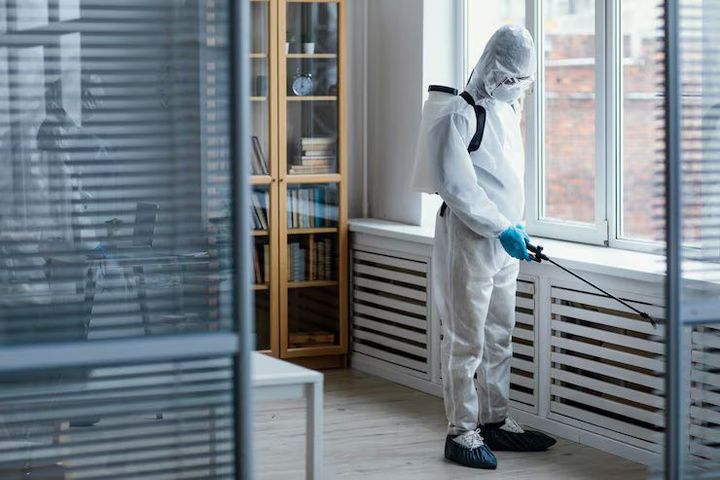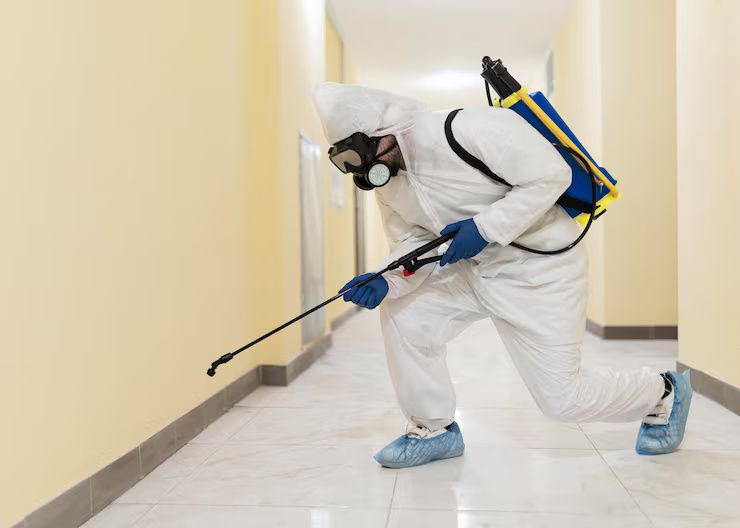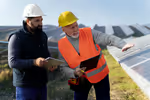
Pest Control Overview: Basics, Explanation, and Useful Information
Pest control refers to the process of managing and reducing unwanted organisms such as insects, rodents, and other species that can cause structural damage, spread diseases, or disrupt daily activities. These pests exist in both indoor and outdoor environments, often taking advantage of food sources, moisture, shelter, and human-influenced habitats. Because pests can adapt quickly and reproduce rapidly, various scientific and environmental methods are used to keep them under control.
This field plays a significant role in public health, agriculture, food production, and residential protection. Pest control practices include biological methods, physical techniques, environmental adjustments, and regulated chemical applications. Modern pest management focuses on understanding pest behavior, habitat conditions, and long-term prevention strategies. By combining scientific research with real-world observations, pest control continues to evolve toward safer, more effective, and environmentally responsible approaches.

Importance
Pest control has become increasingly important due to rising urbanization, global travel, climate change, and shifts in ecological balance. Many pests thrive in warm environments, making climate variations a major factor in population growth. Without proper control, pests can contaminate food, damage buildings, reduce agricultural yields, and expose people to infections. Effective management helps prevent property damage and supports healthy living environments.
Communities, farmers, homeowners, and commercial facilities all benefit from well-planned pest management practices. In agriculture, controlling pests protects crops and ensures reliable food supply chains. In public health, pest management reduces exposure to pathogens carried by mosquitoes, cockroaches, rodents, and ticks. In residential settings, prevention helps stop structural deterioration and creates a healthier indoor environment.
As populations grow and environmental conditions shift, the demand for reliable, data-driven pest control knowledge has increased. Educational understanding of prevention methods, identification techniques, and responsible pest management helps individuals make informed decision
Recent Updates
Recent developments between 2023 and 2024 show significant advancements in pest control technologies, environmental research, and integrated management practices.
One major trend involves the growth of Integrated Pest Management (IPM), an approach that focuses on long-term solutions through a combination of monitoring, habitat modification, biological methods, and selective use of chemical options when necessary. IPM strategies have become more detailed due to improvements in environmental data collection and weather-based prediction tools.
The use of smart monitoring devices has also expanded. Sensors and digital traps can track pest movement, population levels, and seasonal trends. These systems provide detailed data that help reduce unnecessary interventions and support targeted responses.
Another key update is the rise of eco-friendly control methods, including plant-based repellents, beneficial insects, and microbial treatments. These techniques continue to receive attention as communities emphasize sustainability.
Research organizations have also released updated guidelines regarding rodent behavior, pesticide rotation, and resistance management. These findings help reduce the likelihood of pests becoming resistant to conventional control methods.
Laws or Policies
Pest control is influenced by strict environmental, health, and safety regulations designed to protect humans, animals, and ecosystems. Each country maintains its own standards, but several common policies affect pest control activities:
-
Public health and sanitation requirements ensuring facilities prevent pest infestations through proper waste management and hygiene practices
-
Agricultural regulations that define acceptable pest levels and approved treatment methods for crop protection
-
Chemical usage regulations that determine which products can be applied, application limits, and safe handling procedures
-
Environmental protection policies designed to minimize contamination of soil, water, and air
-
Housing and building codes requiring preventive measures to limit pest entry in residential and commercial structures
These rules help ensure that pest control activities remain safe, consistent, and environmentally responsible. Many guidelines emphasize prevention, integrated management, and proper documentation.
Tools and Resources
Pest control relies on a wide range of tools and supportive technologies. These resources help with identification, monitoring, prevention, and long-term management.
Common tools and resources include:
-
Inspection tools such as flashlights, magnifiers, and moisture meters
-
Monitoring traps including glue traps, pheromone traps, and digital monitoring devices
-
Biological control agents such as beneficial insects and microbial treatments
-
Physical barriers like mesh screens, sealing materials, door sweeps, and structural repairs
-
Environmental control tools for reducing moisture, improving ventilation, and managing waste
-
Educational apps for pest identification and basic prevention tips
-
Online pest activity databases showing seasonal patterns and regional trends
-
Integrated Pest Management planning tools for tracking inspection results and prevention efforts
These resources help create a structured approach, ensuring pests are managed effectively while minimizing environmental impacts.
Pest Activity Comparison Table
| Pest Type | Common Habitats | Main Concerns | Preferred Control Approach |
|---|---|---|---|
| Rodents | Buildings, storage areas | Structural damage, contamination | Habitat modification, sealing entry points |
| Cockroaches | Kitchens, basements | Hygiene concerns, allergen exposure | Sanitation improvement, monitoring traps |
| Termites | Wooden structures | Structural weakening | Physical barriers, moisture control |
| Mosquitoes | Standing water | Public health risks | Environmental management, biological control |
| Ants | Indoor food areas | Food contamination | Habitat management, entry point sealing |
FAQs
What is pest control?
It is the process of managing and reducing unwanted organisms such as insects, rodents, and other species that can disrupt health, comfort, or structural environments.
Why is pest control important?
It helps protect homes, public health, agriculture, and stored goods from damage, contamination, and disease transmission.
Are natural pest control methods effective?
Yes. Many natural options, including biological agents and environmental adjustments, can be effective when combined with proper prevention techniques.
What causes pest infestations?
Common causes include food availability, moisture, shelter, structural gaps, and seasonal environmental conditions.
How can pest problems be prevented?
Prevention methods include sealing entry points, improving sanitation, managing moisture, and using monitoring tools.
Conclusion
Pest control remains an essential part of maintaining safe, healthy, and stable environments across residential, commercial, and agricultural settings. As environmental conditions evolve, understanding pest behavior, seasonal patterns, and long-term management strategies becomes increasingly important. New developments in monitoring technology, eco-friendly methods, and integrated management approaches are shaping the future of pest control. With improved tools, regulations, and educational resources, individuals and industries can make informed decisions that support both effective pest management and environmental responsibility.










